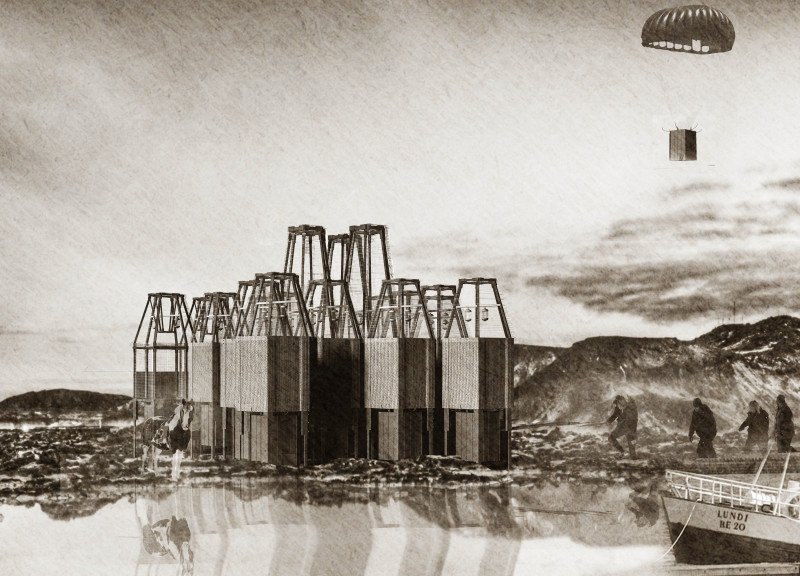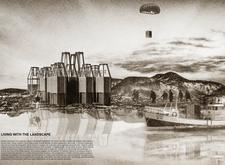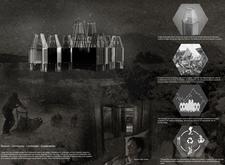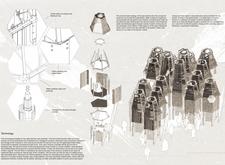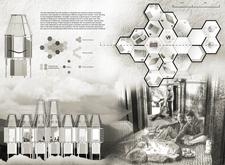5 key facts about this project
Modular Configuration and Community Integration
This architectural design features a series of interconnected hexagonal living units. Each module is optimized for functionality, allowing for varied living arrangements while fostering communal engagement. The central communal area serves as a focal point, promoting social interactions and shared experiences among residents. This layout not only strengthens community bonds but also enhances the practical use of space.
The use of timber as the primary construction material offers structural integrity while maintaining visual harmony with the landscape. The incorporation of light-permeable fabric cladding on upper sections enables natural light infiltration while providing necessary weather protection. These design elements collectively emphasize a commitment to sustainability, with waste management systems integrated into the architecture to promote environmental responsibility.
Innovative Sustainability Strategies
The project's commitment to sustainability is further illustrated through climate-responsive design strategies. Elevated structures help mitigate the effects of severe weather, ensuring the resilience of the living spaces. Additionally, the design incorporates a composting system that recycles nutrients back into the ecosystem, serving both environmental and agricultural functions.
The architectural approach emphasizes modular versatility, allowing for expansion and adaptation based on community needs and environmental changes. This dynamic characteristic distinguishes the project from traditional static living environments, facilitating an ongoing relationship between inhabitants and their surroundings.
Exploring Architectural Details
For a more comprehensive understanding of "Living with the Landscape," it is beneficial to explore the architectural plans, sections, and detailed designs. The intent and functionality behind each element can be further appreciated through an examination of these architectural ideas, which demonstrate how form meets purpose in this innovative project. Readers are encouraged to delve deeper into the architectural aspects to gain insights into how the design contributes to both individual living experiences and the broader context of sustainable architecture.


